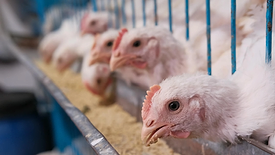Home » Salmonella
Articles Tagged with ''Salmonella''
Sponsored Content
eBook | Food Safety Solutions for Meat and Poultry Producers
March 13, 2025
Regulatory Changes Impacting Your Food Safety Program, Part 2—What Should USDA's Priorities Be?
Your opinions on USDA's proposed Salmonella regulations and your priorities for your food safety programs in 2025.
February 14, 2025
Never miss the latest news and trends driving the food safety industry
eNewsletter | Website | eMagazine
JOIN TODAY!Copyright ©2025. All Rights Reserved BNP Media.
Design, CMS, Hosting & Web Development :: ePublishing












